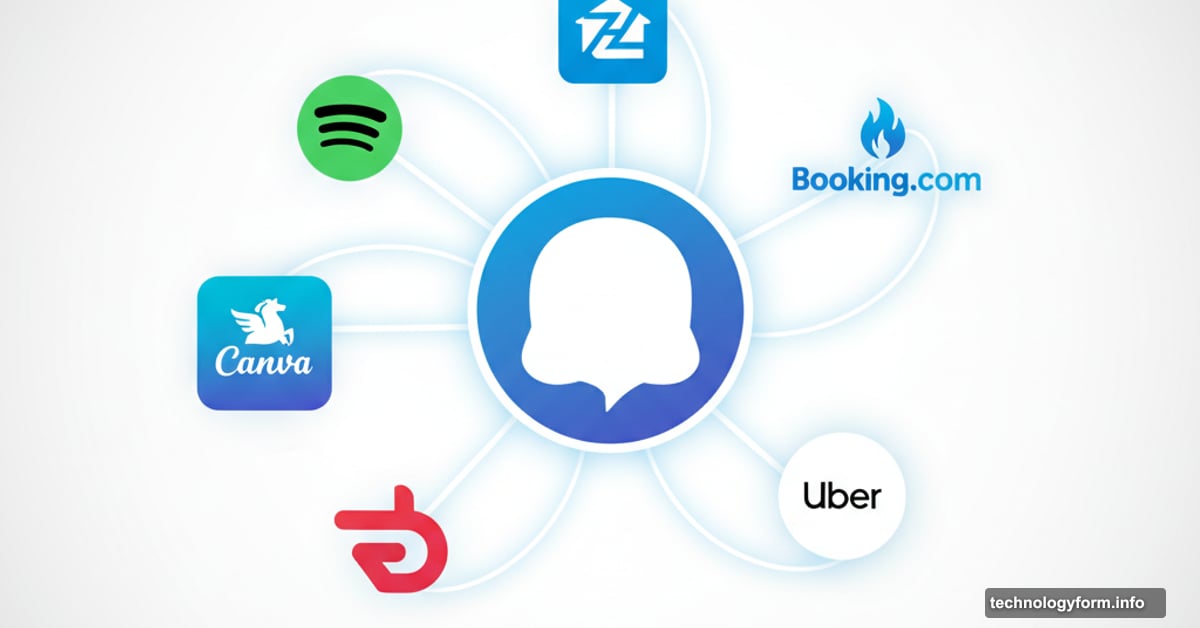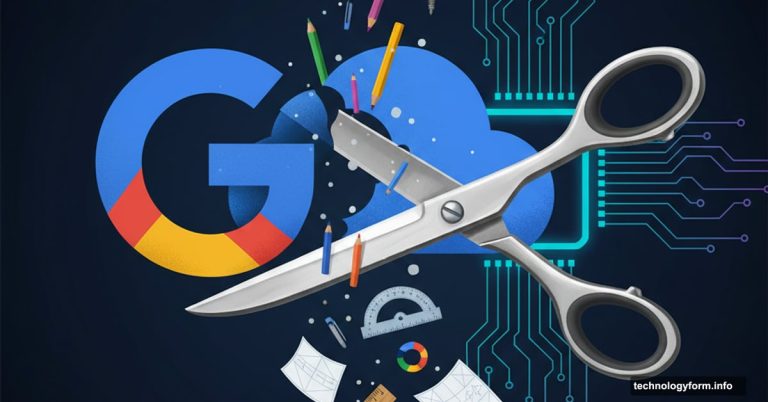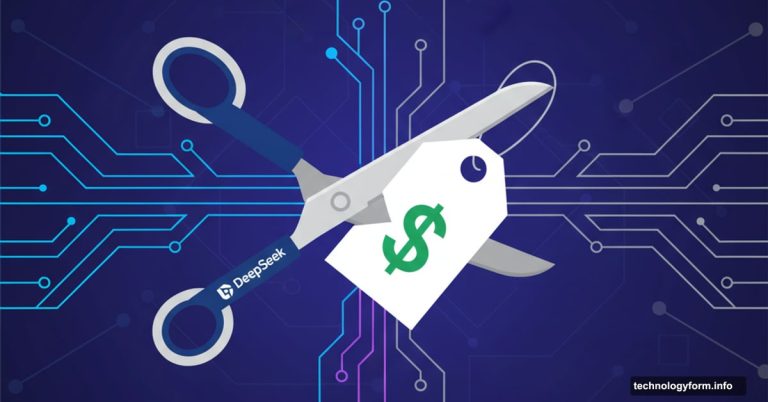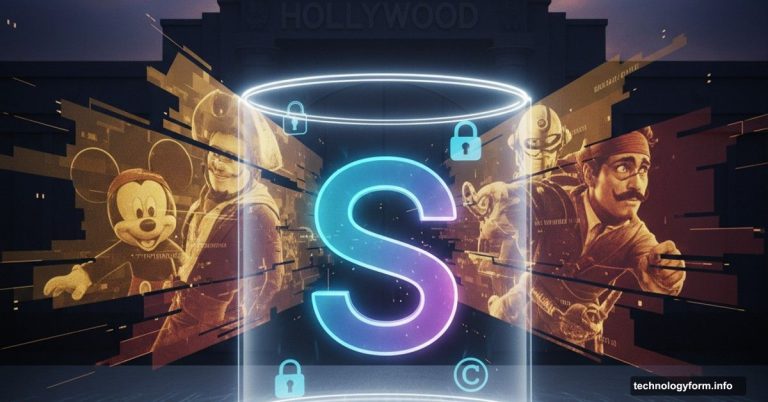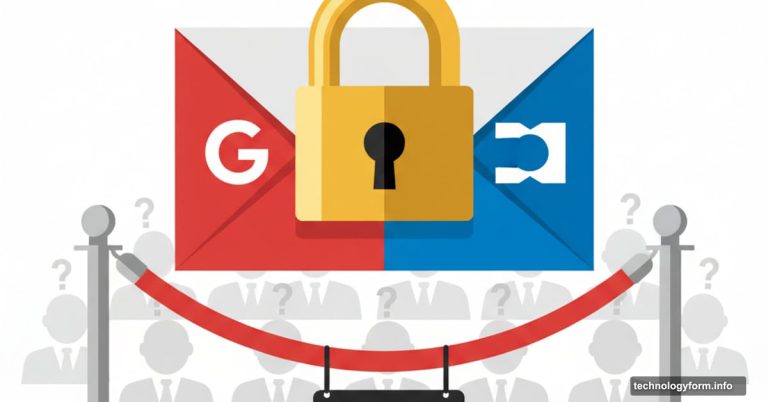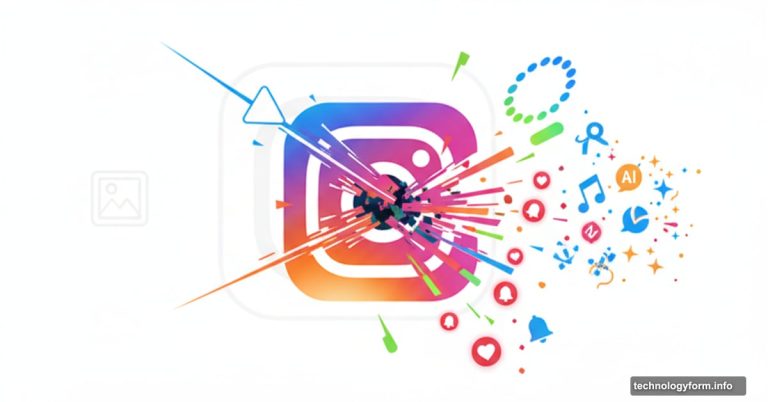ChatGPT Just Became Your App Hub. What That Actually Means
ChatGPT isn’t just a chatbot anymore. OpenAI just turned it into something closer to an operating system.
The company rolled out third-party app integrations at its DevDay conference. But this isn’t another plugin marketplace. Instead, apps run directly inside ChatGPT’s interface. You can browse Zillow listings, play Spotify tracks, and book hotels without leaving the chat window.
That changes how millions of people interact with software. Plus, it signals where OpenAI thinks conversational AI is heading.
Apps Live Inside the Chat Now
Traditional plugins required switching contexts. You’d ask ChatGPT a question, get redirected to another service, then come back.
Not anymore. The new integrations display interactive interfaces right in the conversation. Maps, playlists, property listings, and presentations appear inline.
For instance, ask ChatGPT to find trending songs on Spotify. The chatbot queries the streaming service and displays playable tracks directly. No app switching required. Similarly, Zillow property searches show real estate listings with photos and details in the chat itself.
OpenAI demonstrated this at DevDay with live examples. The difference from plugins became immediately clear. Everything happens in one continuous conversation.
ChatGPT’s User Base Exploded to 800 Million
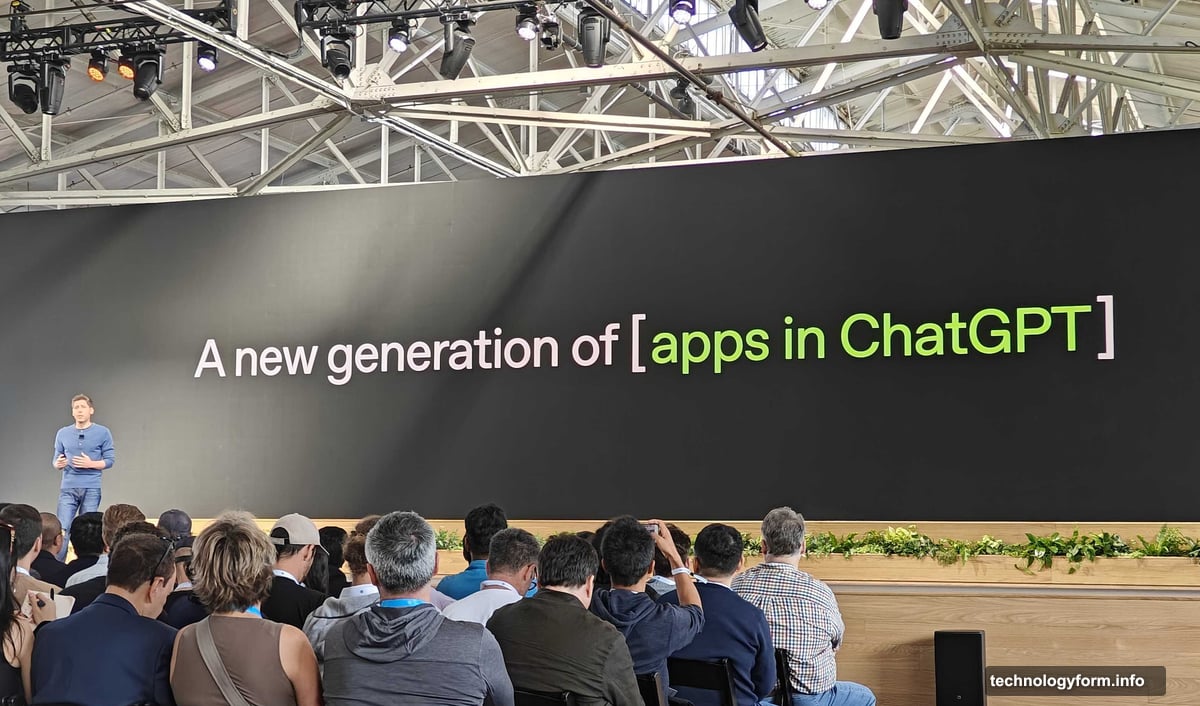
OpenAI revealed ChatGPT now has over 800 million weekly active users. That’s massive scale for a platform barely two years old.
Nick Turley, OpenAI’s head of ChatGPT, suggested the chatbot has become an entry point to the web for many users. People start their day with ChatGPT instead of a browser or app launcher.
So the app integration strategy makes sense. If hundreds of millions already begin tasks in ChatGPT, why force them to leave?
Yet this also raises questions about control and competition. ChatGPT essentially becomes a gateway that decides which apps users discover.
It’s Not an App Store, But It’s Close
OpenAI insists this isn’t an app store. But the comparison feels inevitable.
The company controls which apps integrate. It determines how those apps appear in conversations. And ChatGPT can proactively suggest apps when it detects user intent.
Right now, the first wave includes Booking.com, Canva, Coursera, Figma, Expedia, Spotify, and Zillow. More apps launch in coming weeks, including Target, DoorDash, Instacart, Uber, and Uber Eats.
OpenAI CEO Sam Altman acknowledged the trust issue during a press Q&A. The company doesn’t want to recommend low-quality apps and break user confidence. So they’re being selective about which services get promoted.
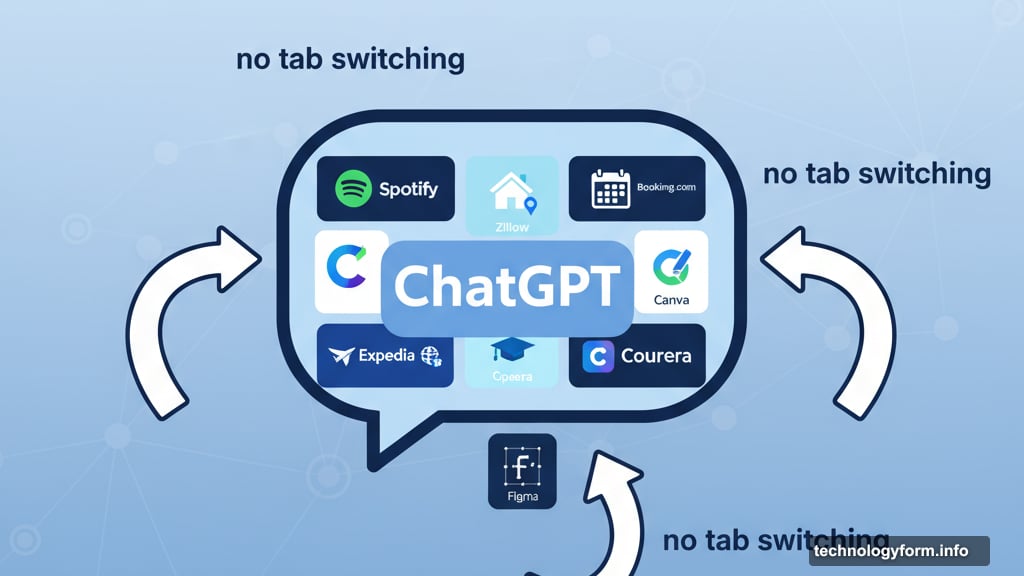
But that selectivity gives OpenAI significant platform power. It’s not quite Apple’s App Store or Google Play. Yet it’s definitely gatekeeping in some form.
Developers Get New Tools to Build
OpenAI released an apps software development kit in preview mode. That lets developers create experiences specifically for ChatGPT’s conversational interface.
Uber explained how this works for food delivery. When ChatGPT detects a user wants to order Uber Eats, it confirms details like delivery address. Then it displays nearby restaurants and menus directly in the chat.
Users click to launch the full Uber Eats app to complete the purchase. So ChatGPT acts as both discovery tool and handoff point.
This model benefits both OpenAI and partners. OpenAI strengthens its ecosystem. Partners gain access to hundreds of millions of potential customers through a conversational interface.
However, developers now must design for a new interaction paradigm. Traditional app UIs don’t translate directly to chat-based interfaces.
Europe Misses Out Again
The feature rolled out globally except in the European Union. OpenAI offered no explanation for the exclusion.
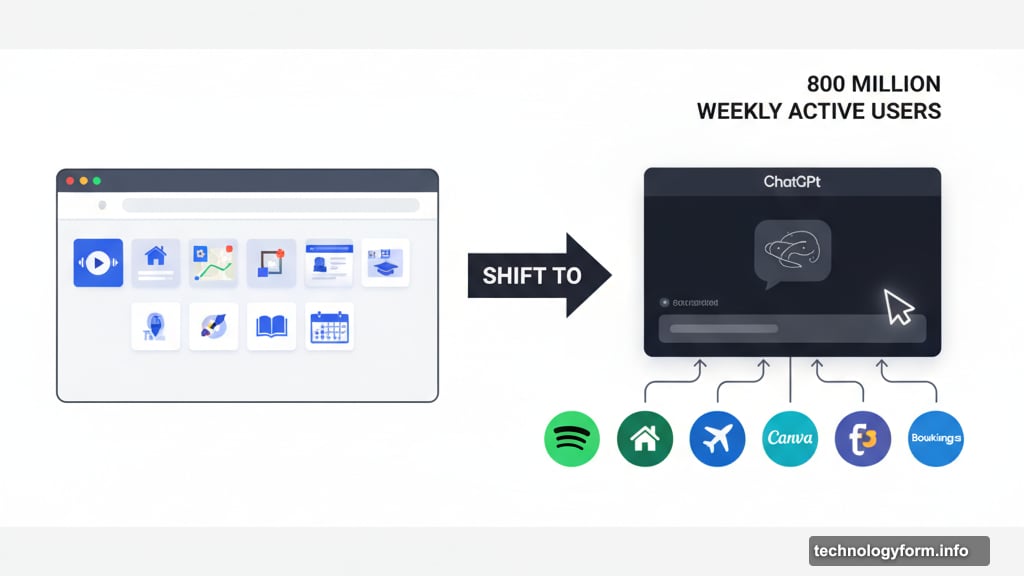
But it’s likely related to EU regulatory concerns about AI and competition. The region has stricter rules about how platforms recommend third-party services.
So European users will have to wait. That’s becoming a pattern as AI capabilities expand faster than regulatory frameworks.
Where This Leads Next
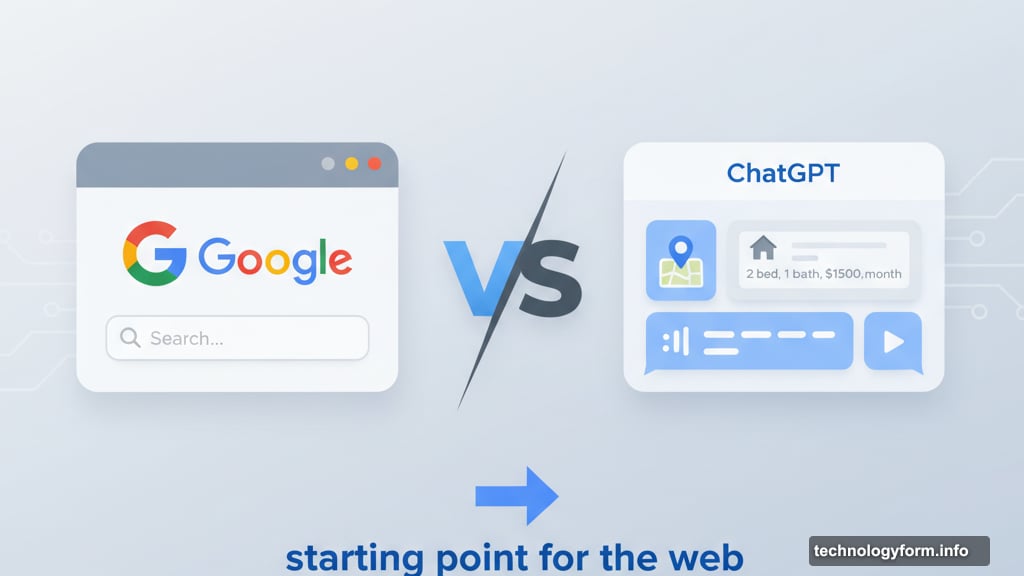
Turley said users will see ChatGPT evolve into “something that’ll be a bit more like an operating system” over the next six months.
That means both existing software integrations and new apps built natively on ChatGPT. The latter category could get interesting. What does software look like when designed entirely around conversational interaction?
We’ll find out soon. OpenAI is clearly moving fast to establish ChatGPT as a platform, not just a product.
The risk? Becoming too powerful too quickly. Platform control always attracts scrutiny. Just ask Apple, Google, Amazon, and Microsoft.
But for now, ChatGPT users gain convenient access to services they already use. And companies get a new channel to reach customers.
Whether that balance holds depends on how OpenAI handles its newfound platform power. So far, they’re saying the right things about being careful. The real test comes when commercial pressures mount.
